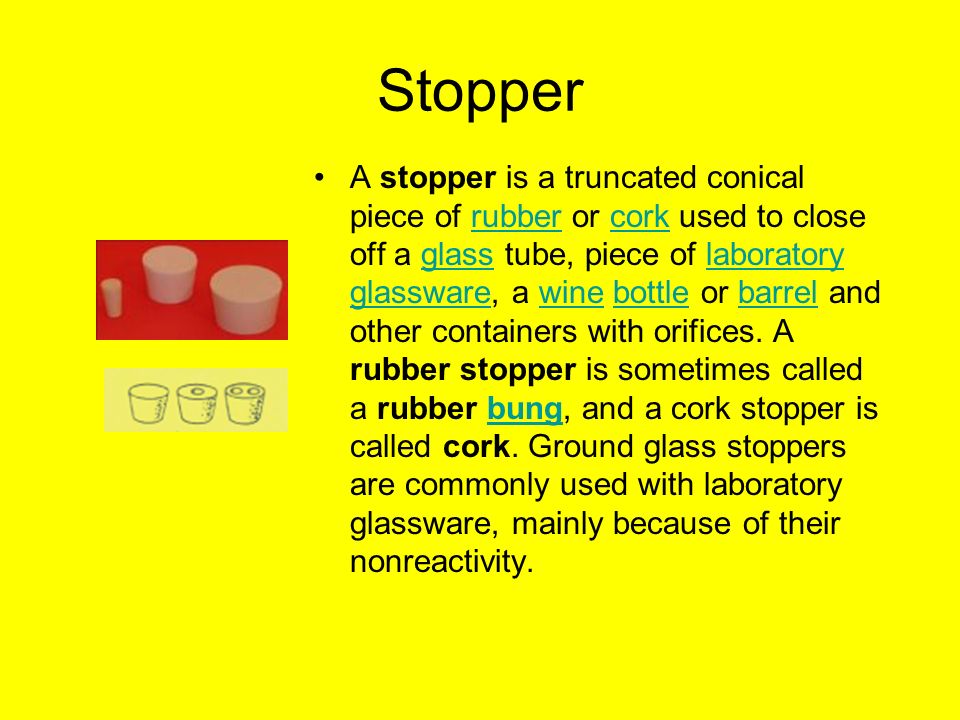Generally in laboratory the sizes of rubber stopper can be varied up to approximately 16 sizes and each of it is specific to certain type of container.
Rubber stopper laboratory apparatus uses.
Aids in pouring liquids into small openings without spilling them.
Some lab work requires a full setup of glassware.
As the rubber stopper is used in many experiment some specific experiment.
They enable us to carry out experiments successfully and make accurate measurements or observations.
Use 6 5 stoppers for 250 ml flasks.
Use a cork borer to drill holes in the.
Rubber stoppers are ideal for plugging joints or holes in laboratory glassware and creating a liquid tight seal.
Used to hold a hot test tube.
In chemistry bungs made of hardened rubber are frequently used in small scale experimental set ups involving non corrosive gases some chemistry bungs may also include one or more holes so a glass tube or laboratory funnel may be inserted through the bung and into the container or another piece of apparatus.
For small test tubes use 00 stoppers.
Use 0 for large test tubes and 1 for extra large.
Last the use of rubber stoppers allows experimenters to shake or mix solutions without.
It can easily be clamped to a ring stand discussed below as well as heated or shaken mechanically.
We carry stoppers both with and without pre drilled holes in a wide range of the most common sizes.
Rubber stopper stoppers come in many different sizes.
Used to plug a flask or testtube for safe keeping.
This is a list of 27 basic pieces of laboratory equipment you would find in a general chemistry lab.
Many types of apparatus are used for scientific work in the laboratories.
The primary purpose of a rubber stopper is to prevent a gas or liquid from escaping its container during a scientific experiment.
A laboratory rubber stopper or a rubber bung is mainly used in chemical laboratory in combination with flasks and test tube and also for fermentation in winery.
Used to mix heat or store substances.
Lab equipment and uses.
The narrow opening also allows for the use of a rubber or glass stopper.
Used to hold test tubes.
Each is named explained and shown in a picture.
Rubber bungs are often used with glass containers such as test tubes flasks jugs and many other pieces of standard lab equipment.
Rubber stoppers can also prevent the contamination of samples by protecting the contents of laboratory glassware from air.
Learn about some common pieces of laboratory equipment and how to use each one properly.
Stoppers can have holes for thermometers and for other probes that may be used.
The rubber bung may be used to seal a flask because the user may require the contents.
However we have compiled all possible common and comprehensive list of 20 laboratory apparatus and their uses.
The sizes are from 0 to 8.
Used to clean test tubes.
Commonly encountered equipment in the chemistry laboratory.










